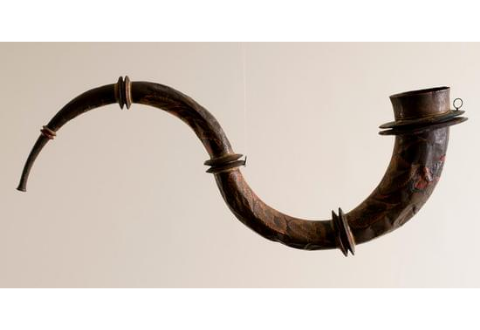Sourindro Mohun Tagore's collection
Sourindro Mohun (1840-1914) was a member of the Pathuriaghata branch of the Tagore family beside having a title as a Raja, and was a major player in the Bengali Renaissance in the last quarter of the 19th century. As a musicologist, he was mainly concerned with upgrading Bengali's musical repertoire by reviving certain concepts from the Sanskrit tradition. Starting in 1870, he founded music schools and wrote numerous theoretical works. He composed pieces that illustrated his personal vision of Hindustani music, and occasionally wrote musical notation. In this perspective, he also had many...
Sourindro Mohun (1840-1914) was a member of the Pathuriaghata branch of the Tagore family beside having a title as a Raja, and was a major player in the Bengali Renaissance in the last quarter of the 19th century. As a musicologist, he was mainly concerned with upgrading Bengali's musical repertoire by reviving certain concepts from the Sanskrit tradition. Starting in 1870, he founded music schools and wrote numerous theoretical works. He composed pieces that illustrated his personal vision of Hindustani music, and occasionally wrote musical notation. In this perspective, he also had many musical instruments built, which he offered, along with his own writings and translations, to some forty governments and institutions around the world. These instrumental ensembles, which testify to a conception of Hindustani music in which nationalist and colonialist, traditionalist and modernist, artistic and political considerations are intertwined, are nowadays preserved in museums around the world.
The collection of instruments, books and scores that Raja Tagore sent to Belgium is undoubtedly one of the most remarkable in the world. As a gift to Leopold II in 1876, the collection was shortly thereafter offered to the Royal Conservatory of Brussels where, together with the Fétis collection, it led to the creation of the Musée Instrumental, the former MIM. This donation of about 100 nstruments (inv. no. 01-98) contributed greatly to the development of the first scientific classification of musical instruments by Victor-Charles Mahillon (1841-1924), the first curator of the museum. Until the end of his life, Sourindro Mohun Tagore and Victor-Charles Mahillon kept in touch by post: the former sent his more recent works and sometimes instruments (for example, the music box no. inv. 1946 reproducing eight of his compositions), the latter requested all kinds of information about Indian musical traditions.
